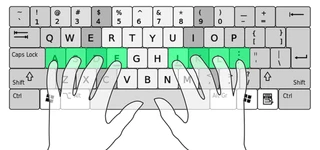If you think revenue generation is all you need to focus on in order to make your business successful, you are in for a surprise. In the rapidly evolving world of trade, your financial well-being not only depends on how much money you make but also on how effectively you manage your cash flow.
To attain the same, that is to say, to optimize your cash flow management, efficient tracking, management, and optimization of bills receivable is key. What are these and how do they make a significant difference in your business’s financial health and accounting expertise? Let’s seek to answer…
What are Bills Receivable?
Bills receivable, as the name suggests, are bills of exchange that vendors issue in the name of customers who avail their goods or services on credit. In layman’s terms, these are sums of money that customers owe to a business and promise to pay at a future date or within a specified period.
As legally binding promises, these come in a variety of forms, including promissory notes, invoices, or other legal documents. Since they act as cash inflows that a business is set to receive in the future, they get recorded as assets on the balance sheet.
Types of Bills Receivable
Bills receivable can be of numerous kinds depending on the nature of transaction made. Some of their most common types are mentioned below for your understanding…

Maxyfi
Starting Price
Price on Request
- Trade Receivables: Trade receivables are invoices that businessmen generate for all the goods or services they sell as part of regular business transactions. These give customers a set period of, say 30 days or above, to make the payment.
- Notes Receivable: These act as written promises made on the part of the customers to make payments at a certain date. These are usually issued for long-term transactions.
- Other Receivables: Other receivables are amounts of money that are not related to sales. These include loans extended, tax refunds, and more.
- Short-Term Receivables: Known as current assets, these require the customers to make the payment within one year from the balance sheet date.
- Long-Term Receivables: Known as non-current assets, these payments need to be settled one year after the balance sheet date.
- Signed Receivables: These require acceptance on the part of the customers before they get complete and are made available for payment.
- Unsigned Receivables: These do not require acceptance on the part of the customer and serve as documents for claiming repayment.
- Banker’s Acceptances: These get used in international trade and are guaranteed by a bank.
- Commercial Papers: These serve as short-term debt instruments and are issued by large corporations.
Suggested Read: Accounts Receivable vs Accounts Payable: What’s the Difference?
Why Are Bills Receivable Important?
As stated earlier, effective management of Bills receivable is vital for a business’s financial prosperity. There are sundry reasons as to why we say that. Find some of them listed below…
1. Cash Flow Management
Maintaining a healthy cash flow is mandatory for businesses to function smoothly. For, without enough cash in hand, they are bound to struggle whilst investing in growth, making payments to their suppliers, or handling routine operational expenses.
As the prime source of cash inflows, thus, bills receivable are important and require effective management, so businesses never run out of money and find themselves trapped in debts.
2. Asset Optimization
Businesses see bills receivable as assets that have the potential to convert into cash within a short period. For, when realized, these enhance their overall liquidity and make them financially strong.
Their optimization thus is key for businesses to have a stable economic standing. This, so they get to attract investors or secure loans easily whenever needed.


Peakflo
Starting Price
$ 224.00
3. Improved Relationships with Clients
When businesses let customers secure good and services on credit, they become a customer favourite instantaneously. For customers view it as a form of trust extended on the part of a business.
If issued and managed properly, thus, bills receivable are sure to keep that trust intact, leading to long-term relationships and repeat business opportunities.
4. Financial Reporting
As crucial financial instruments, bills receivable play an integral role in a business’s balance sheet and other important economic statements. To ensure they are accurately issued and accounted for, thus becomes important, especially when a business interacts with its investors, creditors, and other stakeholders.



Maxyfi
Starting Price
Price on Request
How Bills Receivable Impact Financial Statements?
Here’s how bills receivable affect a company’s financial statements…
- Balance Sheet: Since these get categorized as assets on the balance sheet, any increase in their number reflects a growth in sales or a lenient credit policy. A decrease, on the other hand, represents a drop in sales or stronger collection practices.
- Income Statement: These don’t directly affect the income statement, however, their impact on revenue is too obvious to ignore. As revenue generated post sales gets recorded on the income statement, a corresponding entry in the form of bills receivable finds its mention on the balance sheet. An increase in the latter implies more sales on credit for the business in question.
- Cash Flow Statement: Cash flow statement, in simple terms, keeps a record of all the money a business generates from its operations. If the number of bills receivable is more, the business in question is selling more on credit than on cash. This might indicate a boost in sales, but if not managed properly, can lead to a shortage of funds in the course of time.


Inebura
Starting Price
Price on Request
Effective Strategies to Manage Bills Receivable
There are sundry ways of managing your receivable bills in an appropriate manner. Find the best ones mentioned below…
1. Establish Clear Credit Policies
Every business should have a clear and concise credit policy, so customers get an in-depth understanding of all the credit terms – payment periods, interest rates, and credit limits. In case the credit polices aren’t defined, misunderstandings might arise, leading to unnecessary delays in payments.
2. Regularly Monitor Accounts Receivable
Businesses should keep a strict tab on their accounts receivable, so they can make note of all the due dates and outstanding balances. The overdue accounts should then be focused on and quickly followed up with to avoid bad debts.


SetuFi
Starting Price
Price on Request
3. Use Invoice Factoring
If a business is facing liquidity issues owing to long payment cycles, it can resort to invoice factoring. For the unversed, invoice factoring is when businesses sell their bills receivable to a third-party company (also known as a factor) in exchange for cash. However, those opting for it should properly weigh the pros and cons of doing so for short-term liquidity.
4. Offer Early Payment Discounts
If customers are given discounts on early payments, they are bound to settle their bills on time. For instance, a business can give, say, a 5% off on invoices paid within 15 days. This will not only lessen the number of outstanding bills receivable you have but also improve your cash flow to a great extent.


Cadency Global
Starting Price
Price on Request
5. Send Payment Reminders
It is imperative for businesses to send timely payment reminders to their overdue accounts. This, so they can evade the risk of bad debts. These reminders can be sent via phone, email, or even letters.
6. Implement Collection Procedures
Businesses should also have an effective collection mechanism in place for their overdue accounts. They can even hire collection agencies for the same, if need be. The goal is not to let their payments remain uncollected for too long, as they may eventually become bad debts.


Upflow
Starting Price
$ 489.00
The Impact of Bad Debts on Bills Receivable
Bad debts, in layman’s terms, are amounts of money that become uncollectible owing to the customers’ inability to pay them. A customer can fail to make payments owing to various reasons, including bankruptcy, financial difficulties and more. So, when bills receivable become bad debts, businesses take a hit, and so does their financial standing in the market.
To evade getting trapped in this situation, businesses are advised to create an allowance for doubtful accounts, accounts that have the potential to become bad debts. This gets recorded as an expense on the income statement and is reduced from the total amount of receivables on the balance sheet.


Kolleno
Starting Price
Price on Request
Conclusion
All in all, bills receivable have a significant role to play in an organization’s overall economic well-being and prosperity. This fact alone necessitates their management in a timely and effective manner. This, so businesses have the liquidity they need to operate smoothly and earn the trust of both their customers and stakeholders alike.
To efficiently manage this critical function, implementing accounts receivable software can significantly streamline the process. These software solutions help businesses track outstanding invoices, automate reminders, reduce human error, and speed up collections. With real-time updates and integrated features like payment gateways, billing schedules, and reporting tools, businesses can gain better control over their cash flow and improve operational efficiency.
So, if you are planning to start a new business or optimizing one you already own, make sure to invest in accounts receivable software to maintain a constant check on your receivables, no matter the time or place. With the right software in place, you can ensure timely payments, enhance financial transparency, and focus on growing your business while ensuring its economic stability.
Yashika Aneja is a Senior Content Writer at Techjockey, with over 5 years of experience in content creation and management. From writing about normal everyday affairs to profound fact-based stories on wide-ranging themes, including environment, technology, education, politics, social media, travel, lifestyle so on and so forth, she... Read more





























